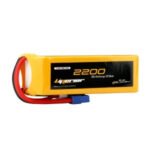Using a computed tomography (CT) scan, medical professionals can view inside your body. It creates images of your organs, bones, and other tissues by combining X-rays with computer technology. Compared to a standard X-ray, it displays more detail. A CT scans near me can be performed on any part of your body. The process is painless and takes very little time.
CT Scan Machine
The CT scan machine is a diagnostic tool that creates three-dimensional (3D) digital images using a motorized X-ray.
The CT scan near me machine is composed of multiple crucial components. You will slide across the middle of a gantry while lying on a movable table. That is the ring-shaped area of the scanner and houses the digital X-ray detectors and X-ray tubes. The X-ray source is across from the detectors. Upon detecting X-rays, the sensors transmit the data to a computer. The computer creates intricate pictures from the data.
CT Scan vs. MRI
Imaging devices like an MRI and CT scan allow medical professionals to view inside your body. You will lie on a moving table that goes through a machine shaped like a doughnut for both tests.
X-rays are used in a CT scan to visualise the body. A strong magnet and radio waves are used in an MRI to produce comparable images. CT scans near me are helpful in displaying spatial relationships, such as the boundaries between organs. The purpose of an MRI is to display both normal and pathological tissue.
CT scans are frequently used to detect blood clots, malignancies, bone fractures, internal bleeding, and damage to the brain and spine. A CT scan cannot reveal some disorders that an MRI can. For example, malignancies of the uterus, prostate, and some liver tissues are difficult to detect on a CT scan. Moreover, soft tissue or joint injuries, as well as injuries to vital organs, including the heart, brain, and digestive system, are diagnosed with an MRI.
PET vs. CT Scan
Like MRI and CT scans near me, a positron emission tomography (PET) scan creates images of your organs and tissues. However, it functions differently. A radiotracer, a safe radioactive substance, is injected into you during a PET scan. Once the radiotracer has had an opportunity to enter your bloodstream, tissues, and cells, you will be placed on a moving table, much like a CT scan table. More significant amounts of the radiotracer are absorbed in areas of your body where metabolic activity is elevated. This is detected by the scan, which highlights potential problem regions such as brain disorders, cancer, or heart problems. Real-time cellular changes in your body can be detected by a PET scan, even before a CT or MRI can detect anything wrong).
Vital activities, including blood flow, oxygen consumption, and blood sugar metabolism, can all be measured with a PET scan. Long before a CT scan can detect malfunctioning organs or tissues, it can identify problems with these systems.
How Does CT Scan Work?
To be more precise, they use a small X-ray beam that revolves around a single body part. This offers several photos taken from various perspectives. Alike DEXA scan. using this data, a computer generates a cross-sectional image. This two-dimensional (2D) scan displays a “slice” of the interior of your body, similar to one piece in a loaf of bread.
Several slices are produced by repeating this technique. To create a comprehensive picture of your organs, bones, or blood vessels, the computer layers these images on top of one another. To prepare for surgery, a surgeon can utilize this kind of scan to examine a tumour from all angles.
How is a CT Scan Done?
A radiology clinic or hospital would most likely provide you with a scan. It is possible that your doctor would advise you to fast for a few hours before the surgery. It could also be necessary for you to take off any jewellery and wear a hospital robe.
A radiology technologist will be responsible for the CT and DEXA scan. During the test, you will lie on a table within a big CT machine in the shape of a doughnut. The X-rays round your body as the table slowly passes through the scanner. A buzzing or whirring sound is typical. We ask you to remain motionless because any movement will cause the image to become blurry. Sometimes, you might have to hold your breath.
How Long CT Scan Take?
An average CT scan near me takes thirty minutes to complete. Although preparation takes up most of the time, the scan takes a little while—typically less than 30 minutes. If you have to drink the contrast agent and wait for it to take effect, sometimes it could take longer. The length of the procedure may also depend on the parts of your body that are being scanned. You’ll typically return home the same day.
Conclusion
A CT scan is an imaging test that makes images of your organs, bones, and other tissues using X-rays and a computer. To improve the visibility of softer tissues in the imaging, you may need to consume a substance known as a contrast agent, depending on the area of your body being scanned.



